Geology Reference
In-Depth Information
of the upper mantle in the hot low-
density region beneath an ocean ridge.
This magma is injected into the crust in
the form of basalt dykes or gabbro sills,
and part is extruded onto the surface
as lava flows. These basaltic rocks form
the new oceanic crust; beneath it, new
oceanic mantle lithosphere is formed
by the addition of ultramafic material
transferred by ductile flow from the
asthenosphere. As new material is
added, earlier formed lithosphere moves
sideways, cools, and gradually sinks to
the normal level of the deep ocean floor.
The processes attending plate con-
struction at ocean ridges can be conven-
iently studied in Iceland, which is the
only exposed part of the Mid-Atlantic
ridge. Here, an average spreading rate
of ~2 cm/yr has been achieved by the
injection of a dyke swarm along the
ridge axis accompanied by a number of
volcanoes, two of which (Eyjafjallajökull
and Grimsvotn) have been recently
active with dramatic consequences.
Comparison of precise surface meas-
urements at three of the main volcanic
centres by the satellite
InSAR
technique
reveals areas of uplift, with rates of
~1 cm/yr, and depression of ~5 cm/yr.
The uplifted areas, respectively 40 km
and 50 km in diameter, are consid-
ered to be due to the accumulation of
magma at the crust-mantle boundary,
whereas the smaller depressed areas are
attributed to subsidence of a shallow
magma chamber due to cooling.
The Red Sea-Gulf of Aden-African
rift system (Figure 3.9B) is an example
of how a constructive plate bound-
ary forms on continental lithosphere.
The three rifts form what is known as
a
triple junction
; in two of the arms of
the system - the Red Sea and Gulf of
Figure 3.8
Plate motion on a sphere.
Lithosphere plates are pieces of a
spherical surface; their movement
relative to adjoining plates is parallel
to transform faults that form part of
their common boundary but may
be oblique to ridges or subduction/
collision zones. The diagram
visualises two plates: an oceanic plate
(coloured green) is created at a ridge
and destroyed at a subduction zone;
both these boundaries are connected
by transform faults that are parallel to
small circles about the pole of rotation
of the plate movement relative to the
other plate (coloured brown).
ocean
ridge
transform
fault
3
14
15
oceanic
plate
pole of
rotation
tf
tf
subduction
zone
of the ridge, which is being subducted
north-eastwards beneath the American
plate; however, relative to the North
American plate, the transform faults
themselves are moving northwards.
The rates of movement of the plates
can be estimated from the dating of
the magnetic sea-floor stripes; these
give rates of the order of centimetres
per year. Such rates can be verified by
present-day precise measurement of the
separation of Europe and America, for
example. They seem very slow to us but,
measured over geological time, are sub-
stantial - 100 kilometres in one million
years is not untypical. Plate movement
at the surface, of course, is not continu-
ous nor uniform but consists of short
phases of rapid movement, which
generate earthquakes (
see
Chapter 6),
separated by long periods of appar-
ent inactivity during which the crust
undergoes imperceptibly slow move-
ment known as 'creep'. These move-
ments average out, over geological time,
to the 'long-term' rates stated above.
The plates are pieces of the strong
upper layer of the Earth, termed the
lithosphere
, consisting of the crust and
the uppermost part of the mantle (
see
Figure 2.4B). This strong layer rests on
the weaker
asthenosphere
, which is
capable of very slow solid-state flow,
allowing the plates to move over the
underlying mantle. The oceanic litho-
sphere varies in thickness from around
50 kilometres beneath the ocean ridges
to more than 100 kilometres near the
continental margins. The continental
lithosphere is considerably thicker.
Making new plate: constructive
boundaries
The construction of new plate takes
place along the central zones of the
ocean ridges and within continental
rift valleys such as the great
African
Rift
. The focus of present-day activ-
ity at these constructive boundaries is
marked by earthquakes and volcanic
activity in a zone around 100 kilo-
metres wide along their central axes.
Figure 3.9A shows how the creation
of new oceanic lithosphere takes place.
Some of the new material takes the form
of basalt magma produced by melting
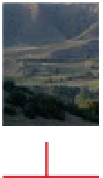
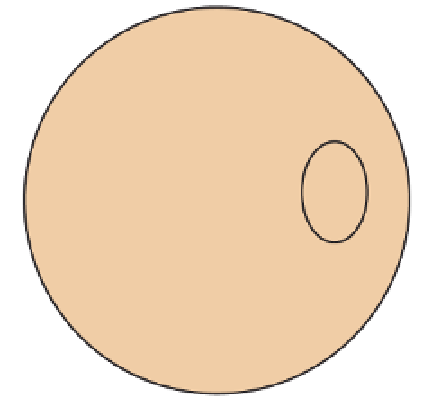

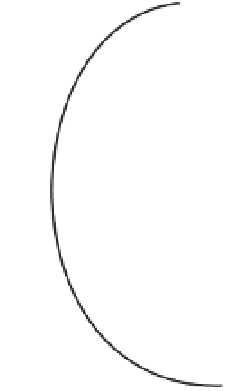
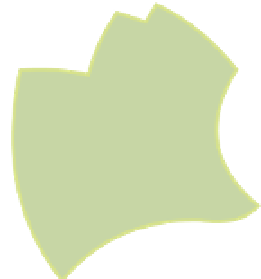






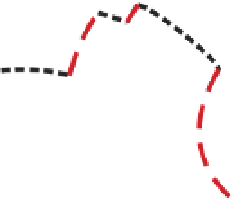



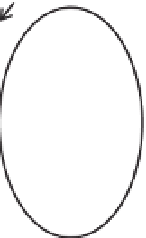


Search WWH ::

Custom Search